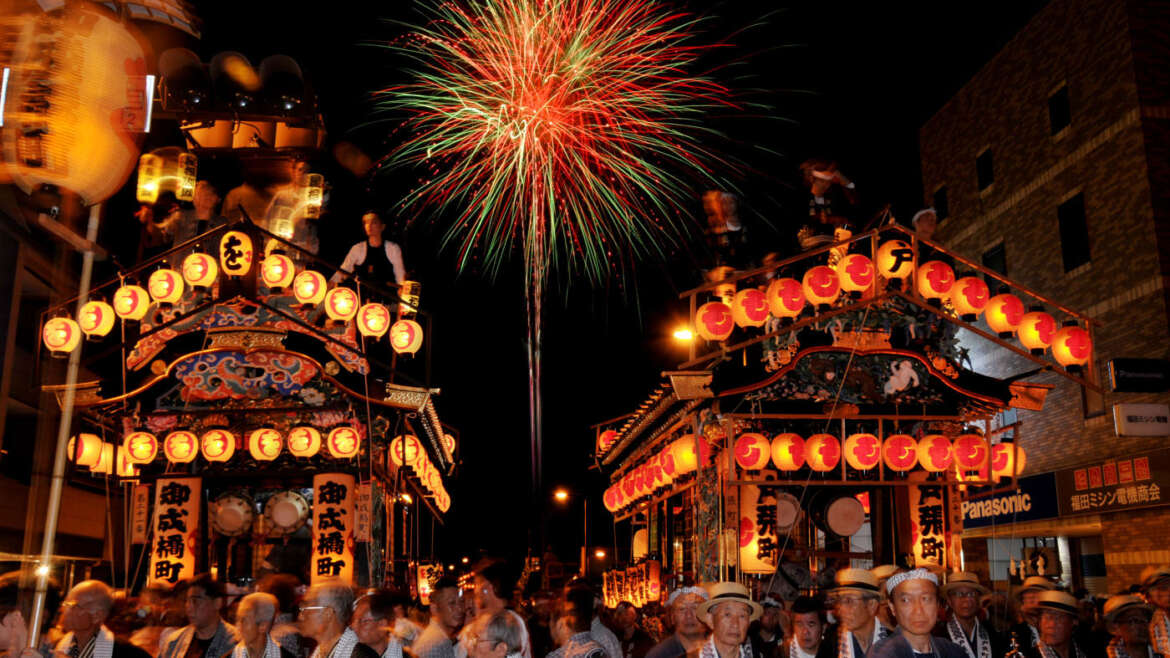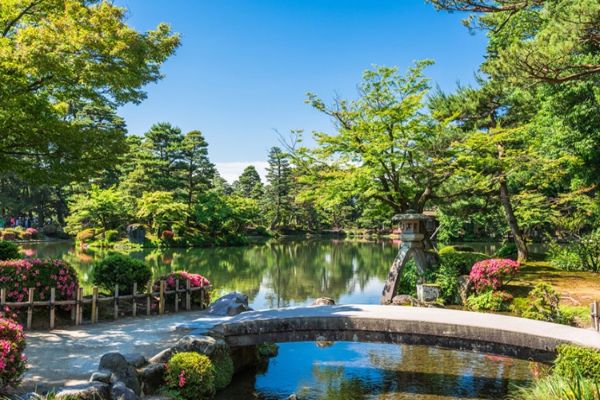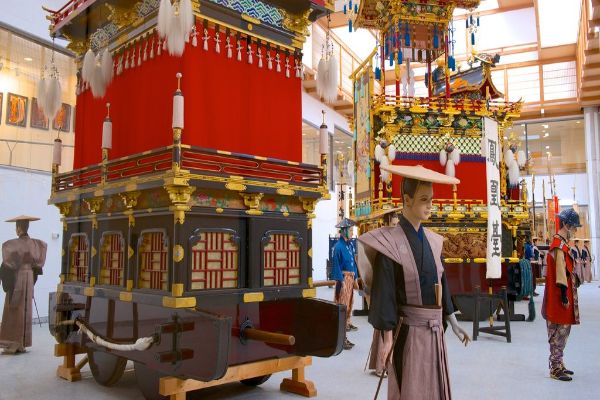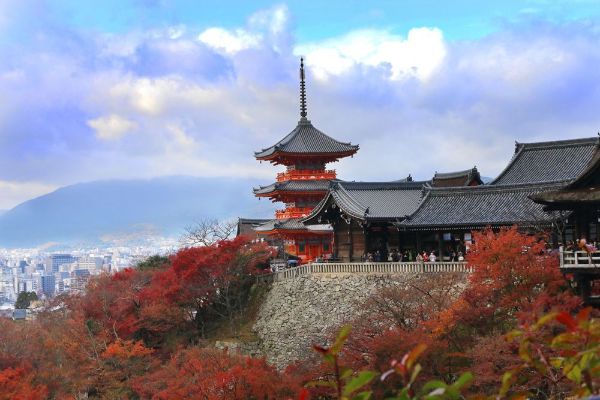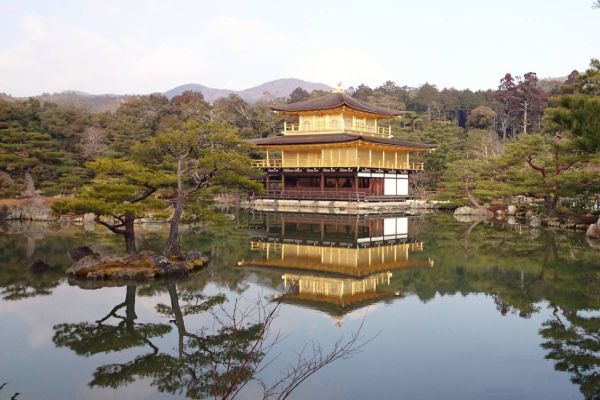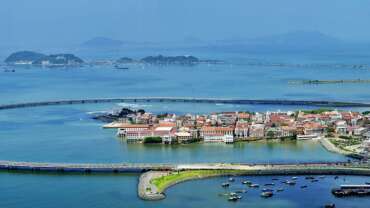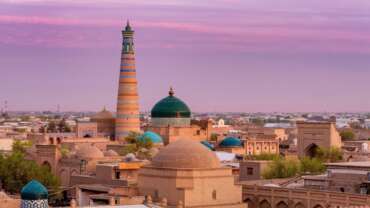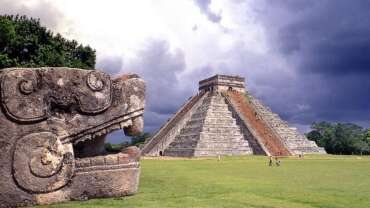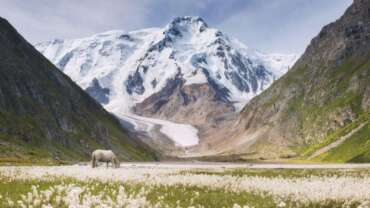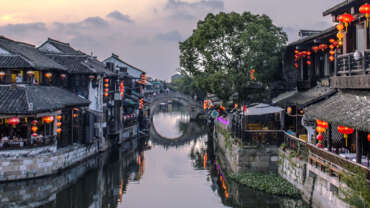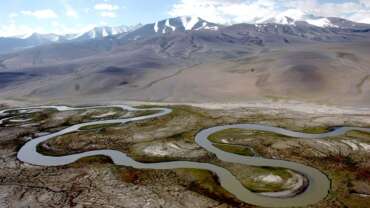MICE in Japan - Endless Discovery!
In business settings when welcoming the people of the world to Japan, highly experienced professionals provide dependable services with “Omotenashi” – Japan’s unique spirit of hospitality.
– Facilitating the smooth implementation of any kinds of business meetings.
– Improving motivations through providing attractive incentive programs.
– Facilitating the smooth implementation of any kinds of world conventions.
– Producing moving moments during international events.
Our dedicated and professional team works closely with clients to plan and organize events, delivering the desired results and customer satisfaction.
History of Japan
Prehistoric Japan
Pre-Ceramic culture
It is not known when humans first settled on the Japanese archipelago. It was long believed that there was no Paleolithic occupation in Japan, but since World War II thousands of sites have been unearthed throughout the country, yielding a wide variety of Paleolithic tools. These include both core tools, made by chipping away the surface of a stone, and flake tools, made by working with a stone flake broken off from a larger piece of stone. There is little doubt that the people who used these implements moved to Japan from the Asian continent. At one stage, land connections via what are now the Korea and Tsushima straits made immigration from the Korean peninsula possible, while another connection, via what are now the Sōya and Tsugaru straits, allowed people to go in from northeastern Asia.
The Paleolithic Period in Japan is variously dated from 30,000 to 10,000 years ago, although the argument has been made for a Lower Paleolithic culture prior to 35,000 BCE. Nothing certain is known of the culture of the period, though it seems likely that people lived by hunting and gathering, used fire, and made their homes either in pit-type dwellings or in caves. No bone or horn artifacts of the kind associated with this period in other areas of the world have yet been found in Japan. Since there was no knowledge whatsoever of pottery, the period is referred to as the Pre-Ceramic era.
Climatic changes help to account for the existence of a Mesolithic stage in early Japanese culture, a time when much of the abundant fauna of earlier times became depleted by the expanding human population of the archipelago. The introduction of the bow and arrow is regarded as a local response to a decrease in game available for food.
The Pre-Ceramic era was followed by two better-recorded cultures, the Jōmon and the Yayoi. The former takes its name from a type of pottery found throughout the archipelago; its discoverer, the 19th-century American zoologist Edward S. Morse, called the pottery jōmon (“cord marks”) to describe the patterns pressed into the clay. A convincing theory dates the period during which Jōmon pottery was used from about 10,500 until about the 3rd century BCE. Of the features common to Neolithic cultures throughout the world—progress from chipped tools to polished tools, the manufacture of pottery, the beginnings of agriculture and pasturage, the development of weaving, and the erection of monuments using massive stones—the first two are prominent features of the Jōmon period, but the remaining three did not appear until the succeeding Yayoi period. Pottery, for example, first appeared in northern Kyushu (the southernmost of the four main Japanese islands) about 10,500 BCE, in an era that is called the Incipient Jōmon period. While continental influence is suspected, the fact that Kyushu pottery remains predate any Chinese findings strongly suggests that the impetus to develop pottery was local. Jōmon is thus best described as a Mesolithic culture, while Yayoi is fully Neolithic.
The manufacture of pottery, however, was highly developed, and the work of Jōmon peoples has a diversity and complexity of form and an exuberance of artistic decoration. It is customary to regard changes in pottery types as a basis for subdividing the age into six periods: Incipient (c. 10,500–8000 BCE), Initial (c. 8000–5000 BCE), Early (c. 5000–2500 BCE), Middle (c. 2500–1500 BCE), Late (c. 1500–1000 BCE), and Final (c. 1000–300 BCE). Since Jōmon culture spread over the entire archipelago, it also developed regional differences, and this combination of both chronological and regional variations gives the evolution of Jōmon pottery a high degree of complexity.
The pottery of the Incipient and Initial periods includes many deep urnlike vessels with tapered bullet-shaped bases. In the Early period the vessels of eastern Japan become roughly cylindrical in shape, with flat bases, and the walls contain an admixture of vegetable fibre. In the Middle period there were rapid strides in pottery techniques; the pots produced in the central mountain areas during this time are generally considered to be the finest of the whole Jōmon era. The surfaces of these normally cylindrical vessels are covered with complex patterns of raised lines, and powerfully decorative projections rise from the rims to form handles. From the Middle period onward there is increasing variety in the types of vessels, and a clear distinction developed between high-quality ware using elaborate techniques and simpler, purely functional pots. The amount of the latter type increases steadily, preparing the way for the transition to Yayoi pottery.
Jōmon dwelling sites have been found in various parts of the country. They can be classified into two types: one, the pit-type dwelling, consisted of a shallow pit with a floor of trodden earth and a roof; the other was made by laying a circular or oval floor of clay or stones on the surface of the ground and covering it with a roof. Remains of such dwellings have been found in groups ranging from five or six to several dozen, apparently representing the size of human settlements at the time. Most of these settlements form a horseshoe shape, with a space in the centre that seems to have been used for communal purposes. Nothing certain is known, however, concerning social or political organization at this period. It can be deduced that each household was made up of several family members and that the settlement made up of such households was led by a headman or shaman.
The people of the Jōmon period lived mainly by hunting and fishing and by gathering edible nuts and roots. The appearance of large settlements from the Middle period onward has been interpreted by some scholars as implying the cultivation of certain types of crop—a hypothesis seemingly supported by the fact that the chipped-stone axes of this period are not sharp but seem to have been used for digging soil. Doubtless there was some form of cultivation: starchy yams and taro, probably originating from the continent, were raised, the starch from them formed into a type of bread. This incipient agriculture seems related to a cultural florescence in mid-Jōmon times that lasted about 1,000 years.
Weaving of fibres was still unknown, though woven baskets have been found dating to the Early period. Archaeological findings indicate that clothes were largely made of bark. Body ornamentation included bracelets made of seashells, earrings of stone or clay, and necklaces and hair ornaments of stone or bone and horn. From the latter part of the period, the custom also spread throughout the archipelago of extracting or sharpening certain teeth, probably performed as a rite marking the attainment of adulthood.
No especially elaborate rites of burial evolved, and the dead were buried in a small pit dug near the dwelling. Sometimes the body was buried with its knees drawn up or with a stone clasped to its chest, a procedure that probably had some religious or magical significance. A large number of clay figurines have been found, many representing female forms that were probably magical objects associated with primitive fertility cults.
For years certain scholars have claimed that the bearers of the Jōmon culture were ancestors of the Ainu, an indigenous people of northern Japan. Scientific investigation of the bones of Jōmon people carried out since the beginning of the 20th century, however, has disproved this theory. The Jōmon people might be called proto-Japanese, and they were spread throughout the archipelago. Despite certain variations in character arising from differences in period or place, they seem to have constituted a single ethnic stock with more or less consistent characteristics. The present Japanese people were produced by an admixture of certain strains from the Asian continent and from the South Pacific, together with adaptations made in accordance with environmental changes. There is evidence to suggest that people moved eastward across Siberia and entered Japan via Sakhalin Island and Hokkaido. Nothing can yet be proved concerning their relationship with the people of the Pre-Ceramic period, but it cannot be asserted that they were entirely unrelated.
The Yayoi period (c. 300 BCE–c. 250 CE)
The new Yayoi culture that arose in Kyushu, while the Jōmon culture was still undergoing development elsewhere, spread gradually eastward, overwhelming the Jōmon culture as it went, until it reached the northern districts of Honshu (the largest island of Japan). The name Yayoi derives from the name of the district in Tokyo where, in 1884, the unearthing of pottery of this type first drew the attention of scholars. Yayoi pottery was fired at higher temperatures than Jōmon pottery and was turned on wheels. It is distinguished partly by this marked advance in technique and partly by an absence of the proliferating decoration that characterized Jōmon pottery. It developed, in short, as pottery for practical use. It is accompanied by metal objects and is associated with the wet (i.e., irrigated) cultivation of rice, thought to have begun around the end of the Late Jōmon period. Culturally, the Yayoi represents a notable advance over the Jōmon period and is believed to have lasted for some five or six centuries, from about the 3rd century BCE to the 2nd or 3rd century CE.
In China the 3rd and 2nd centuries BCE correspond with the period of the unified empire under the Qin (221–207 BCE) and Han (206 BCE–220 CE) dynasties, which already had entered the Iron Age. In 108 BCE the armies of the emperor Wudi occupied Manchuria and the northern part of the Korean peninsula, where they established Lelang (Nangnang) and three other colonies. These colonies served as a base for a strong influx of Chinese culture into Korea, whence, in turn, it spread to Japan. The fact that Yayoi culture had iron implements from the outset, and bronze implements somewhat later, probably indicates borrowings from Han culture. Since iron rusts easily, comparatively few objects have been found, but they seem to have been widespread at the time. These include axes, knives, sickles and hoes, arrowheads, and swords. The bronze objects are also varied, including halberds, swords, spears, taku (bell-shaped devotional objects from China), and mirrors. The halberds, swords, and spears seem not to have been used in Japan for the practical purposes for which they were developed in China but rather to have been prized as precious objects.
The cultivation of rice, probably introduced from the Yangtze River delta area of southern China, was one of the most important features of Yayoi culture. The earliest Yayoi pottery and sites, discovered in northern Kyushu, have yielded marks of rice husks as well as carbonized grains of rice; this suggests that rice growing was carried on in Japan from the earliest days of the culture. Traces of paddy fields, their divisions marked with wooden piles, have been found close to sites of settlements in various districts, along with irrigation channels equipped with dams and underdrains, showing that techniques of making and maintaining paddy fields were quite advanced. Rice was first grown in dry (i.e., nonirrigated) fields and marshy areas, however, before paddy cultivation—involving considerable investment of time, labour, and capital—came to predominate.
Generally speaking, the settlements of this period were built on low-lying alluvial land to facilitate the irrigation of the paddies, but at one stage they were built instead in the hills or on high ground. It is not clear whether this was dictated by the needs of defense or whether dry cultivation was being practiced. Much as in the Jōmon period, there were two types of dwelling—the pit type and the type built on the surface—but in addition to these, raised-floor structures appeared and were used for storing grain out of the reach of rodents.
With the acquisition of a knowledge of textiles, clothing made great strides compared with the Jōmon period. The cloth was woven on primitive looms, using vegetable fibres.
People of Japan
Ethnic groups
The Japanese people constitute the overwhelming majority of the population. They are ethnically closely akin to the other peoples of eastern Asia. During the Edo (Tokugawa) period (1603–1867), there was a social division of the populace into four classes—warrior, farmer, craftsman, and merchant—with a peer class above and an outcast class below. With the exception of the burakumin (literally, “people of the hamlet”), the descendants of the former outcast class, this social class system has almost disappeared. The burakumin, however, are still subject to varying degrees of discrimination.
Insofar as a social class system does persist, it does not have the ethnic basis that can exist in multiracial societies, since the Japanese regard themselves as belonging to a single ethnic group. The few exceptions include those classified as resident aliens (particularly Koreans) and Japanese citizens of Ainu and, to a much lesser degree, Okinawan origin. Japan also has a small population of Chinese descent.
Hundreds of thousands of Koreans migrated to Japan (a great many against their will) before and during World War II, when Korea was a Japanese colony, and worked mainly as labourers; those remaining after the war and their descendants, the latter born and raised in Japan, do not have Japanese citizenship and face considerable discrimination.
Historically, both Ainu and Okinawans were often relegated to a second-class status. The indigenous Ainu largely were assimilated into the general population centuries ago; a few small, scattered groups, however, have maintained their identity in Hokkaido. Before the war there was a tendency to distinguish the people of Okinawa from other Japanese because of perceived physical and cultural differences; that tendency has diminished considerably but not entirely disappeared. Okinawan culture, including its dialect and religion, has been recognized as sharing many traits with Japanese culture, and Okinawans have become more assimilated into the larger Japanese society. However, Okinawans have long believed that the continued large presence of U.S. military forces on Okinawa was a form of discrimination against them by the Japanese government. There has also been a resurgence among Okinawans who want to maintain their distinctive cultural identity.
Languages
Japanese is the national language, and Ainu is almost extinct. The Japanese language is generally included in the Altaic linguistic group and is especially akin to Korean, although the vocabularies differ. Some linguists also contend that Japanese contains elements of Southeast Asian languages. The introduction of the Chinese writing system and of Chinese literature about the 4th century CE enriched the Japanese vocabulary. Until that time Japanese had no written form, and at first Chinese characters (called kanji in Japanese) were used to write Japanese; by the 9th century two syllabaries, known collectively as kana (katakana and hiragana), were developed from them. Since then, a combination of kanji and kana has been used for written Japanese. Although some 3,000 to 5,000 kanji are in general use, after World War II the number of characters necessary for a basic vocabulary was reduced to about 2,000, and the writing of these characters was simplified. Tens of thousands of Western loanwords, principally from English, also have been adopted.
The distribution of Japanese nearly coincides with the territory of Japan. Standard Japanese, based on the dialect spoken in Tokyo, was established in the late 19th century through the creation of a national educational system and through more widespread communication. There are many local dialects, which are often mutually unintelligible, but standard Japanese, widely used in broadcasting, is understood nationwide.
Japanese is broadly divided linguistically into the two major dialects of Hondo and Nantō. The Hondo dialect is used throughout Japan and may be divided into three major subdialects: Eastern, Western, and Kyushu. The Eastern subdialects were established in the 7th and 8th centuries and became known as the Azuma (“Eastern”) language. After the 17th century there was a vigorous influx of the Kamigata (Kinai) subdialect, which was the foundation of standard Japanese. Among the Western subdialects, the Kinki version was long the standard language of Japan, although the present Kamigata subdialect of the Kyōto-Ōsaka region is of relatively recent origin. The Kyushu subdialects have been placed outside the mainstream of linguistic change of the Western dialects and retain some of the 16th-century forms of the latter. They extend as far south as Tanega and Yaku islands. The Nantō dialects are used by Okinawa islanders from the Amami Islands in Kagoshima prefecture to Yonaguni Island at the western end of the archipelago. Long placed outside the mainstream of linguistic change, they strongly retain their ancient forms.
Religion
The indigenous religion of Japan, Shintō, coexists with various sects of Buddhism, Christianity, and some ancient shamanistic practices, as well as a number of “new religions” (shinkō shukyō) that have emerged since the 19th century. Not one of the religions is dominant, and each is affected by the others. Thus, it is typical for one person or family to believe in several Shintō gods and at the same time belong to a Buddhist sect. Intense religious feelings are generally lacking except among the adherents of some of the new religions. Japanese children usually do not receive formal religious training. On the other hand, many Japanese homes contain a Buddhist altar (butsudan), at which various rituals—some on a daily basis—commemorate deceased family members.
Shintō is a polytheistic religion. People, commonly major historical figures, as well as natural objects have been enshrined as gods. Some of the Hindu gods and Chinese spirits were also introduced and Japanized. Each rural settlement has at least one shrine of its own, and there are several shrines of national significance, the most important of which is the Grand Shrine of Ise in Mie prefecture. Many of the ceremonies associated with the birth of a child and the rites of passage to adulthood are associated with Shintō. After the Meiji Restoration (1868), Shintō was restructured as a state-supported religion, but this institution was abolished after World War II.
Buddhism, which claims the largest number of adherents after Shintō, was officially introduced into the imperial court from Korea in the mid-6th century CE. Direct contact with central China was maintained, and several sects were introduced. In the 8th century Buddhism was adopted as the national religion, and national and provincial temples, nunneries, and monasteries were built throughout the country. The Tendai (Tiantai) and Shingon sects were founded in the early 9th century, and they have continued to exert profound influence in some parts of Japan. Zen Buddhism, the development of which dates to the late 12th century, has maintained a large following. Most of the major Buddhist sects of modern Japan, however, have descended from those that were modified in the 13th century by monks such as Shinran, who established an offshoot of Pure Land (Jōdo) Buddhism called the True Pure Land sect (Jōdo Shinshū), and Nichiren, who founded Nichiren Buddhism.
Christianity was introduced into Japan by first Jesuit and then Franciscan missionaries in the mid- to late 16th century. It initially was well received, both as a religion and as a symbol of European culture. After the establishment of the Tokugawa shogunate (1603), Christians were persecuted, and Christianity was totally banned in the 1630s. Inaccessible and isolated islands and the peninsula of western Kyushu continued to harbour “hiding Christian” villages until the ban was lifted by the Meiji government in 1873. Christianity was reintroduced by Western missionaries, who established a number of Russian Orthodox, Roman Catholic, and Protestant congregations. Practicing Christians account for only a tiny fraction of the total population.
The great majority of what are now called the “new religions” were founded after the mid-19th century. Most have their roots in Shintō and shamanism, but they also were influenced by Buddhism, Neo-Confucianism, and Christianity. One of the largest, the Sōka Gakkai (“Value Creation Society”), is based on a sect of Nichiren Buddhism. Another new Nichiren sect to attract a large following is the Risshō Kōsei-kai. New Shintō cults include Tenrikyō and Konkōkyō.
Art & Culture of Japan
The arts
Delicacy and exquisiteness of form, together with simplicity, characterize traditional Japanese artistic taste. The Japanese tend to view the traditional Chinese arts generally as being too grandiose or showy. The more recently introduced Western arts are felt to suffer from flaws of exuberant self-realization at the expense of earnest exploration of the conflicts in human relations, in particular the notions of divided loyalties between community, family, and self that create the bittersweet melancholy so pervasive in Japanese traditional drama.
Traditional forms
The highly refined traditional arts of Japan include such forms as the tea ceremony, calligraphy, and ikebana (flower arranging) and gardening, as well as architecture, painting, and sculpture.The performing arts are distinguished by their blending of music, dance, and drama, rooted in different eras of the past. The major traditional theatrical forms (roughly in chronological order of their appearance) are bugaku (court dance and music), Noh (Nō; the classic form of dance-drama), kyogen (a type of comic opera), Bunraku (the puppet theatre), and Kabuki (drama with singing and dancing). Newer genres include Western-style shingeki (“new theatre”) dramas and butoh, a highly stylized dance form. Ikebana, the tea ceremony, and calligraphy are popular pursuits, particularly as aesthetic accomplishments for women. However, traditional Japanese painting, dance, and music have lost much of their earlier popularity, though the poetic forms of haiku and waka have continued to flourish.
Traditional handicrafts constitute some of Japan’s finest examples of visual arts. Notable are the various styles of pottery, lacquerwork, cloisonné, and bamboo ware, as well as papermaking, silk weaving, and cloth dyeing.
With the advance of modernization, many folk traditions and forms of folklore are disappearing. The widespread use of standard Japanese has accelerated this trend, since local cultures are directly related to dialects. Folk songs, for example, are generally no longer commonly sung except in some remote areas in northern and southwestern Japan. Folk music and dance are related to local life and are often significantly concerned with the local religion (whether animistic, Shintō, or Buddhist), agriculture, or human relations (including the theme of love). Some, however, still enjoy a great popularity, which has been increased through the mass media. On informal social occasions, even in the large cities, folk and popular songs are often sung.
Western forms
Western art forms have been fully embraced by the Japanese. Major cities often have several symphony orchestras, and Western-style painting, sculpture, and architecture are widely practiced. Numerous venues for Western classical music have been constructed throughout the country since the 1980s. In addition, a growing number of Japanese classical performers, including conductor Seiji Ozawa (music director of the Boston Symphony Orchestra for three decades) and violinist Gotō Midori, have built reputations abroad. Also notable are conductor Takemitsu Tōru, who incorporated avant-garde musical styles and traditional Japanese instruments into his classical music compositions, and music educator Suzuki Shin’ichi, whose method of violin instruction for children became world-renowned.
The cinema has been highly successful at taking a Western form and putting it through a Japanese aesthetic filter to produce a distinctive style; internationally acclaimed Japanese film directors include Kurosawa Akira, Ozu Yasujirō, Mizoguchi Kenji, and Itami Jūzō. The number of Japanese moviegoers has dropped from its high point in the mid-20th century, because of competition from television, videotapes (and later DVDs), and video games, but innovations such as multiplex theatres (venues with multiple auditoriums) have increased attendance.
Cultural milieu
Influences
It is common for Western observers of contemporary Japan to emphasize its great economic achievement without equal regard to cultural attributes. Yet Japanese cultural distinctiveness and the manner in which it developed are instructive in understanding how it is that Japan came to be the first non-Western country to attain great-power status.
The Japanese long have been intensely aware of and have responded with great curiosity to powerful outside influences, first from the Asian mainland (notably China) and more recently from the Western world. Japan has followed a cycle of selectively absorbing foreign cultural values and institutions and then adapting these to existing indigenous patterns, this latter process often occurring during periods of relative political isolation. Thus, outside influences were assimilated, but the basic sense of Japaneseness was unaffected; for example, Buddhist deities were adopted into the Shintō pantheon. Japan’s effort to modernize quickly in the late 19th and 20th centuries—albeit undertaken at great national and personal sacrifice—was really an extension of the same processes at work in the country for centuries.
Prehistoric Japanese culture was exposed to ancient Chinese cultural influences beginning some two millennia ago. One consequence of these influences was the imposition of the gridiron system of land division, which long endured; it is still possible to trace the ancient place-names and field division lines of this system. Chinese writing and many other Chinese developments were introduced in the early centuries CE; the writing system underwent many modifications over the centuries, since it did not fit the Japanese language. Buddhism—which originated in India and underwent modification in Central Asia, China, and Korea before reaching Japan about the 6th century—also exerted a profound influence on Japanese cultural life, although over the course of time it was modified profoundly from its antecedent forms. Similarly, Chinese urban design was introduced in the layouts of the ancient capital cities of Nara and Kyōto but did not proliferate in the archipelago.
The Japanization of introduced cultural elements was greatly accelerated during the 250-year period of near-isolation that ended in the mid-19th century. After the Meiji Restoration (1868), Japan began to modernize and to industrialize on the European and American pattern. Western cultural traits were introduced on a large scale through the schools and the mass communication media. Western scientific and technical terms have been widely diffused in translation and have even been reexported to China and Korea. American and European influences on Japanese culture are in evidence in literature, the visual arts, music, education, science, recreation, and ideology.
Modernization was accompanied by cultural changes. Rationalism and socialism based on Christianity, as well as Marxism, became inseparably related to everyday Japanese life. Western or Westernized music generally is more common than traditional Japanese music in many social settings. Although Japanese Christians form a tiny percentage of the population, Christmas (or the outer trappings of it) is widely observed, almost as a folk event. The use of Western dress among the Japanese, in place of the traditional kimono, long ago became commonplace, although women may wear formal kimonos at certain celebrations, and both men and women may use casual styles for home wear. House construction also was changed considerably by the introduction of Western architectural forms and functions. In shape, in colour, and in building materials, many contemporary Japanese houses are significantly different from the traditional ones; they now have more modernistic shapes, use more colours, and are more often made of concrete and stucco.
Mt. Fuji - Japan's most iconic mountain
Sacred, singular and spectacular, Mt. Fuji is nothing short of awe-inspiring and rightfully one of the country’s top attractions.
Whether you experience Mt. Fuji up close, from the confines of a relaxing hot spring resort or ryokan, or from as far away as Tokyo, there are many ways you can make the country’s tallest mountain part of your Japan adventure. Feel inspired by our specially selected guides, stories and Fuji-related articles. From fifth station trailhead strolls and overnight climbs to visiting the five Fuji lakes, exploring the foothills, and getting the very best views of the mountain.



